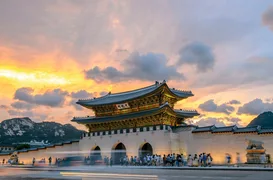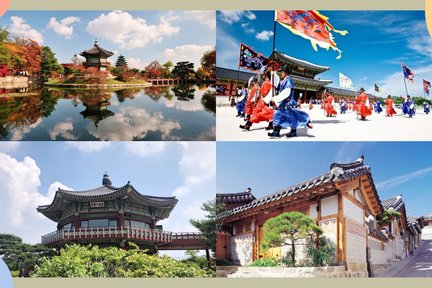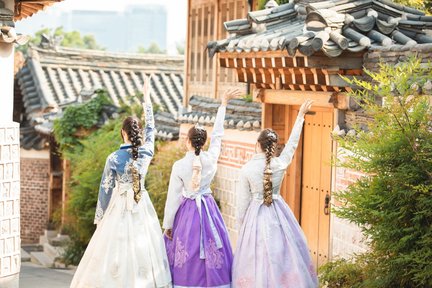Gyeongbok Palace

The best of Gyeongbok Palace
Bucket-list experiences
Make it a getaway
Events with a lot of buzz
Trouble-free transport
All that's good & tasty
More to explore
Why people love Gyeongbok Palace
Nearby places to go
FAQs about Gyeongbok Palace
When is the best time to visit Gyeongbokgung Palace?
How can I get to Gyeongbokgung Palace using public transportation?
Is there a special time to visit Gyeongbokgung Palace at night?
What are the admission fees for Gyeongbokgung Palace?
Can I wear a hanbok to Gyeongbokgung Palace?
What is the best time of day to visit Gyeongbokgung Palace?
What should I wear when visiting Gyeongbokgung Palace?
Are there any important tips for visiting Gyeongbokgung Palace?
What to know before visiting Gyeongbok Palace
Remarkable Landmarks and Must-Visit Sights
Geunjeongjeon (Throne Hall)
The main throne hall where the king held court and conducted state affairs. This hall is a testament to the architectural brilliance of the Joseon dynasty, featuring intricate designs and a grandiose structure.
Gyeonghoeru Pavilion
A beautiful pavilion set on an artificial lake, used for royal banquets and special state events. Its serene surroundings and elegant design make it a must-visit spot within the palace grounds.
Hyangwonjeong Pavilion
A picturesque two-story hexagonal pavilion located on an artificial island, connected by the Chwihyanggyo bridge. It offers a tranquil retreat and stunning views, embodying the harmony of nature and architecture.
Cultural and Historical Significance
Gyeongbokgung Palace, built in 1395, served as the main royal palace of the Joseon dynasty. Despite being destroyed and rebuilt multiple times, it remains a symbol of national sovereignty and a repository of Korea's architectural and cultural heritage.
Architectural Marvels
The palace complex showcases the architectural principles of ancient Korea, with over 500 buildings restored on a site spanning more than 40 hectares. Key structures include the Geunjeongjeon (Throne Hall), Gyeonghoeru Pavilion, and the serene Hyangwonjeong Pavilion.
Restoration Efforts
Since the 1990s, extensive restoration efforts have been underway to return Gyeongbokgung to its former glory. Significant reconstructions include the Heungnyemun Gate and Gwanghwamun Gate, reflecting the palace's historical authenticity.
Cultural Significance
Gyeongbokgung Palace holds immense cultural and historical significance as the main royal palace of the Joseon Dynasty. It has witnessed key historical events and remains a symbol of Korea's resilience and heritage. The palace's architecture and layout reflect the Confucian ideals that shaped Korean society.
Historical Events
Key historical events associated with Gyeongbokgung Palace include its destruction during the Japanese invasion in 1592, the restoration in 1867, and the tragic assassination of Empress Myeongseong in 1895.




